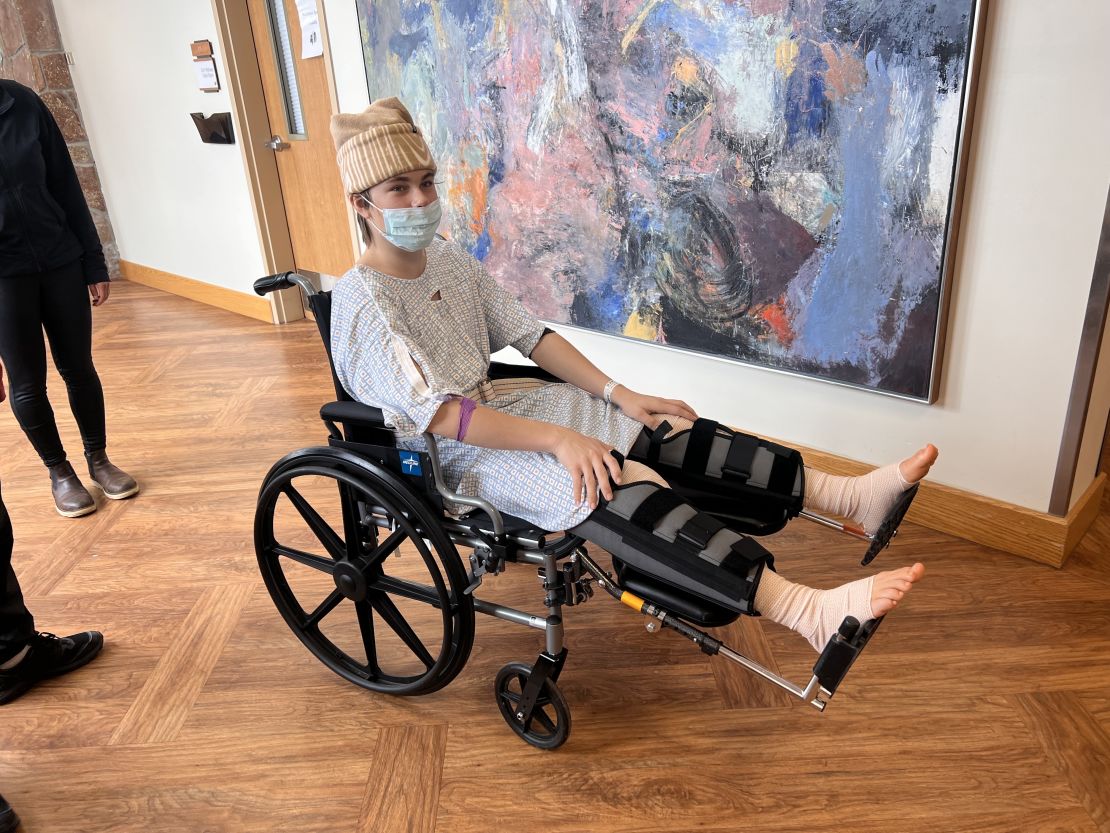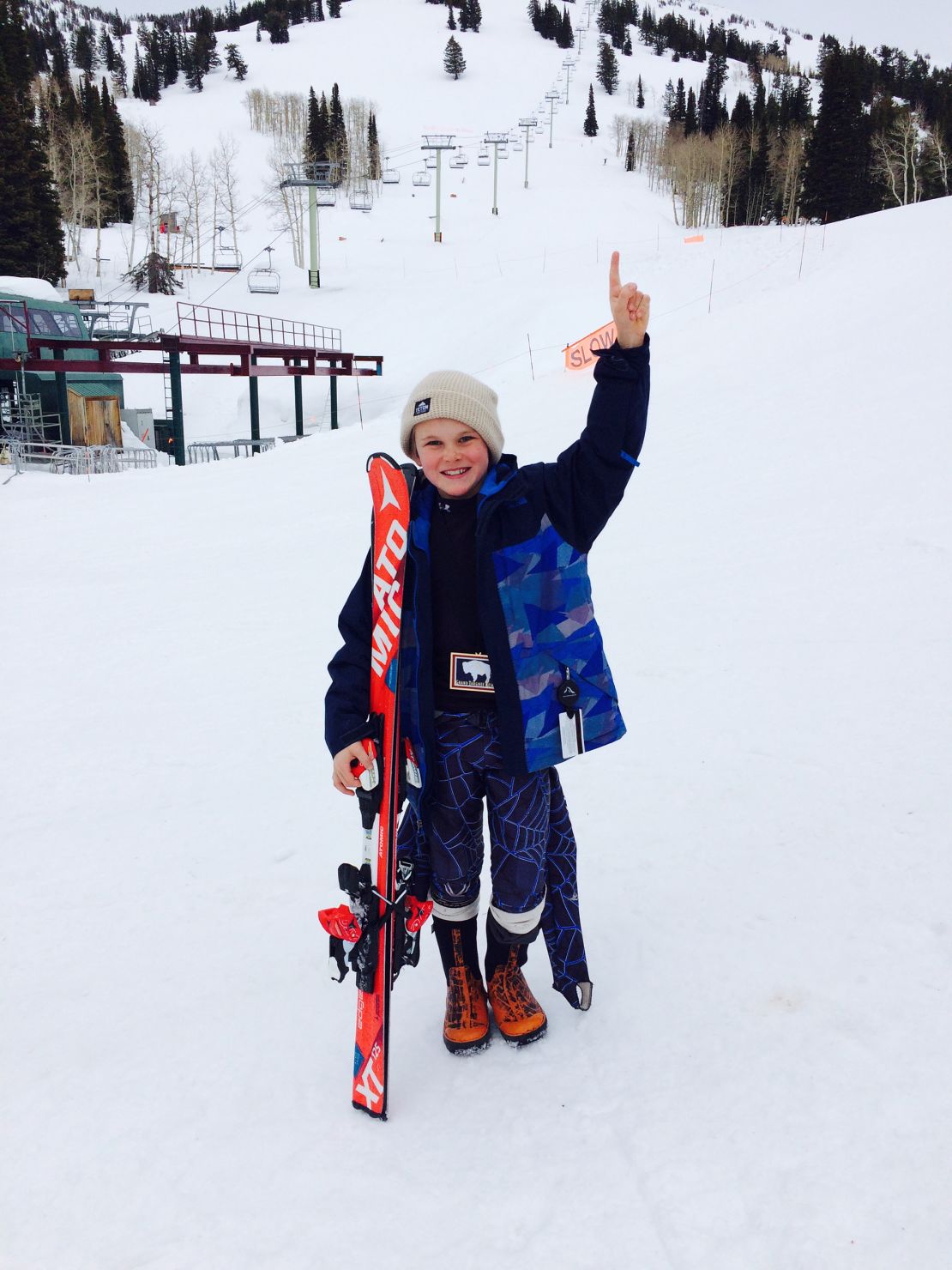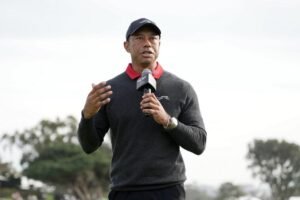Stuck on a 30-degree slope in the Wyoming backcountry, he had little option but to bide his time and wait for search and rescue. All the while, his legs throbbed with agony. “So much more than I ever imagined the human body could even feel,” Jones recalls.
The American freeskier is now almost two years removed from the accident that threatened to derail his career and stop him from walking again, but he can still remember precisely how that day unfolded.
The sun was shining and the sky a shock of blue – dream-like conditions for any skier looking to carve down a powder-coated mountain in front of the camera. Jones had skied the line in question before, and he felt more calm than usual as he slipped off the cliff edge and made his first turn.
But it was after dropping through the air that things started to go wrong – and fast. Jones missed his landing and tumbled several meters down the slope, a ball of string unraveling. As a dusting of snow half-concealed his stricken body, he clung to his knees and let out a piercing scream, pain flooding through his body.
“In the past when I’ve crashed and hurt myself, it’s always been, ‘Oh, when can I ski next?’ the 18-year-old Jones tells CNN Sport. “But in this scenario, I was definitely more concerned for some bigger things, like being able to walk and move again. I had no idea what had happened to me.”
It took about 30 minutes for a helicopter to arrive and airlift Jones to safety. He later learned the full extent of the damage to his legs: both his legs broken on impact and both his meniscuses torn.
Only 16 at the time, Jones’ bright future in the sport was suddenly thrown into jeopardy. Months of recovery lay in front of him, and it took nine weeks of rehab in a hospital bed just to be able to walk again.
“It was a super humbling experience,” says Jones. “It brought me back to ground zero and showed me how to live with myself outside of skiing and being a professional athlete. I definitely had periods of time where things were really tough and there didn’t seem an end to it. But in the end, your reality is your reality.”

Born and raised in Victor, Idaho, Jones was skiing as soon as he could walk. Growing up in a family like his leaves little choice in the matter: his father, Todd, is an experienced skiing filmmaker and the co-founder of extreme sports production company Teton Gravity Research (TGR), while his uncle, Jeremy, is a renowned professional snowboarder.
With the mountain resort of Jackson Hole on his doorstep, Jones’ talents soon became obvious, his ambitions in the sport quickly growing. By the age of 10, he “wanted to start skiing some big lines at Jackson Hole,” according to his father, and by 11, a video compilation of his tricks had gone viral, boosting his online profile.
“I love to ski because I get to fly like a bird,” a cherub-faced Jones says in the video, before twisting, carving and backflipping over a series of slopes and ramps. It’s been viewed more than five million times.
Never far away has been Todd Jones, camera in hand, always poised to capture the next daring feat. In front of his lens was one of the future stars of TGR, and it just happened to be his son.
“My whole life has been working with athletes and being in the mountains,” Todd tells CNN Sport. “Adding Kai in there when he started showing all these incredible skills and focus and desires – it came pretty natural.”

But it can also get complicated. Filming your son, Todd adds, is “a little more intense and a little different” compared to other athletes, even though the practice and safety protocols remain the same.
“With athletes and people and your son, Kai, you’re looking for signs of bad fear,” he says. “You know, is it too scary? Is it scary because it’s dangerous or because you don’t know the line or because it’s outside of your skill set or comfort zone?
“I’m always looking for that, and that’s probably where the dad instinct kicks in heavier when it’s with Kai. But what I see most of the time is someone very comfortable and very psyched.”
This relationship between a father and a son – a filmmaker and a skier – comes to the fore in “Falling into Place” a TGR production about Jones’ crash two years ago. Released in December, it details all the trauma and emotions of the crash itself, as well as the painstaking hospital rehab and the moment Jones is discovered to have life-threatening anemia.
For his father, who was close by when the accident occurred, memories of the crash are brutal and harrowing. As with any athlete injured on the mountain, he immediately started going through the same safety protocols, but at the same time tried “not to panic and freak out.”
The immediate aftermath felt like “some of the darkest days” of his and his family’s lives.
“Oddly enough, it was kind of a freak accident,” says Todd. “Kai hit the line perfectly with speed and landed where he wanted to. … I think I take some solace in that it’s not like he tried to do something, lost his way and just completely landed on rocks.
“That would probably have bothered me a lot more because it would have been like: ‘Are we pushing this too hard? Was I letting my son go into too crazy a terrain that he wasn’t prepared for?’”
“Falling into Place” is more about Jones’ attitude towards skiing and life than an exhibition of his prodigious talent. Few people have endured such physical and mental hardship at such a young age, and the whole ordeal was a formative experience for one of America’s best young skiers.
“I now have a greater appreciation for skiing in the mountains and taking less for granted,” says Jones. “I’m also just making smarter, more calculated decisions. Before my crash, I was just stomping everything, and I’d land anything I tried. I had almost an invincibility complex.
“Now after my crash, I try and make more logical decisions and build into things and progress into things a little slower … That was a huge turning point for me.”
Jones returned to skiing nine months after the crash, though he had to be patient. It took time until he was close to the level he had been at previously, and a creeping anxiety had him and his family thinking that his career might never be the same again.
But a trip to Alaska with TGR in March 2024 convinced him otherwise, and precisely a year after the accident, Jones skied his best line of the winter: a back flip into two consecutive drops, the first around 30 feet high and the second about 20. By the end, both he and his father were in tears.
Another Alaska trip with TGR is coming up in March this year, which Todd describes as “kind of our Super Bowl.” His son, in not quite the same terms, agrees.
“Alaska is pretty indescribable – it’s so much more vast and out there compared to skiing in the lower 48,” says Jones. “So many of the mountains up in Alaska are just uncharted terrain. And there’s so much creativity and expansion possible out there, it’s really like a free skier’s paradise.”
Beyond that trip, Jones is unsure about how the next part of his skiing career will play out. He’s currently focused on filming, though is also open to taking part in big competitions further down the line.
But losing skiing for so long – and in such traumatic circumstances – has galvanized Jones’ love for the sport. Right now, he’s hell-bent on enjoying the ride more than ever before.












